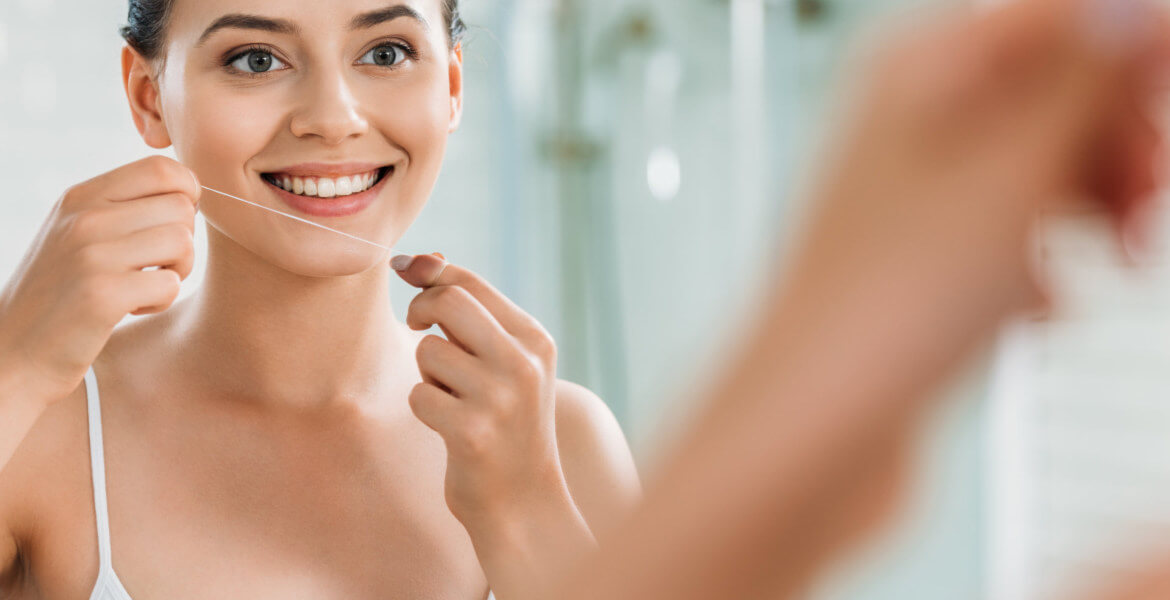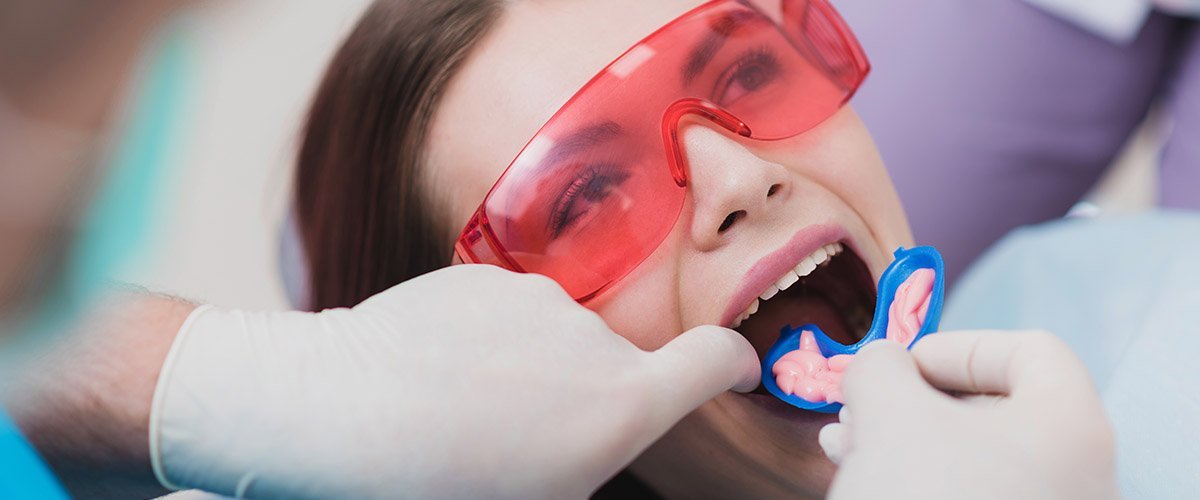● Use the Right Tools

Braces or not, using a soft-bristled toothbrush is important to protect your teeth and gums. Harder bristles can cause gum recession if used with a rough brushing method, and are not really ideal for cleaning your metal brackets and wires.
On top of your traditional soft-bristled toothbrush, more specialty tools are recommended in almost all orthodontic cases. These tools accommodate the extra work it takes to brush brackets and wires, and help to make sure no spots are missed during your brushing routine. These tools can include a very high quality toothbrush, which your orthodontist can help recommend, floss and interdental cleaners, and an at-home oral irrigation system. When all of these tools are compiled with brushing, you can feel confident that you’re giving your teeth the best possible care.
With braces, you have to be a lot more detail-oriented during your brushing routine. You have to be careful to brush from the top to the bottom of each bracket, along with around all the edges to prevent debris sticking to the surface and introducing plaque and tartar. Sometimes in order to get each area, it helps to lift your lip and hold it back while brushing.
● Use Floss and Interdental Cleaners As Needed

Flossing needs to be used in conjunction with brushing to guarantee the best results. While brushing does a fairly good job of removing leftover debris that could get stuck in your braces, floss will ensure that not even a speck is left.
It’s important to floss at least once per day, and it may be wise to schedule that after any meal that you may worry could leave behind lots of debris and food particles. It may be in your best interests to carry some of these flossing and interdental tools on your person, so if you’re on the go or out to dinner you don’t need to be concerned about your braces. There are a variety of different tools that your orthodontist can help you locate and choose so you know what’s best for your treatment, including interdental picks, soft picks, woven dental floss, or others.
If you’re unsure about proper flossing techniques or how to use the interdental devices, you can ask your orthodontist for a demonstration. They’ll be more than happy to oblige!
● Use Fluoride Treatments

Fluoride has been used for long periods of time to prevent cavities and keep teeth clean. When you visit the dentist for your hygiene appointments, a big part of the cleaning process is often a deep fluoride treatment that is left to have lots of topical contact.
These treatments are important without braces, and even more important with them. Since braces make it harder to clean your teeth, therefore making it harder to get rid of bacteria and germs, fluoride treatments work with your brushing and flossing regime to ensure that nothing is left to put your teeth and gums in harm’s way.
You can ask your orthodontist to recommend fluoride rinses and toothpastes that will help give you that extra contact in-between treatments. These products offer protection and assurance that you’ll get all the benefits of a great oral hygiene routine, along with added benefits.
● Watch Yourself Brush
It’s very easy to let your mind wander while brushing, and some people take this time to continue to watch television, or pull out their phone to browse social media. While brushing your teeth isn’t exactly exciting, you shouldn’t have any distractions around while cleaning your braces and teeth.
Watch yourself brush in the mirror to make sure that no teeth or areas are being left untouched. You should be spending about ten seconds brushing each tooth and bracket so you can be positive you’ve left nothing behind, including food and other debris that can jeopardize your oral health and hygiene. Monitoring your brushing and flossing is the best way to know that your routine is 100% effective, and the best way to keep your teeth clean and fresh so that when your braces do come off, they’re free from any harmful stains.
● Brush After Every Meal
One of the best parts about orthodontic treatment is that you have no choice but to develop a great dental hygiene routine that you can continue to practice for years to come. Because braces are so great at trapping everything that attempts to pass through them, you need to brush after every meal to make sure your oral hygiene doesn’t fall behind.
The longer food and other bacteria-causing debris is in direct contact with your teeth, the more opportunity there is for it to cause plaque and other oral health issues that could potentially affect and delay treatment.
To avoid any panic if you aren’t near a toothbrush, you should consider packing a kit with everything you’ll need to fully clean your teeth in a pinch. You can pack this kit with travel sized toothbrushes, toothpaste, rinses and floss so you’re always ready to tackle whatever food decides to snake its’ way into your brackets. It may take some time to adjust to your new intense routine, but you’ll thank yourself on the day your braces come off, and there’s nothing beneath but a crisp, white smile!